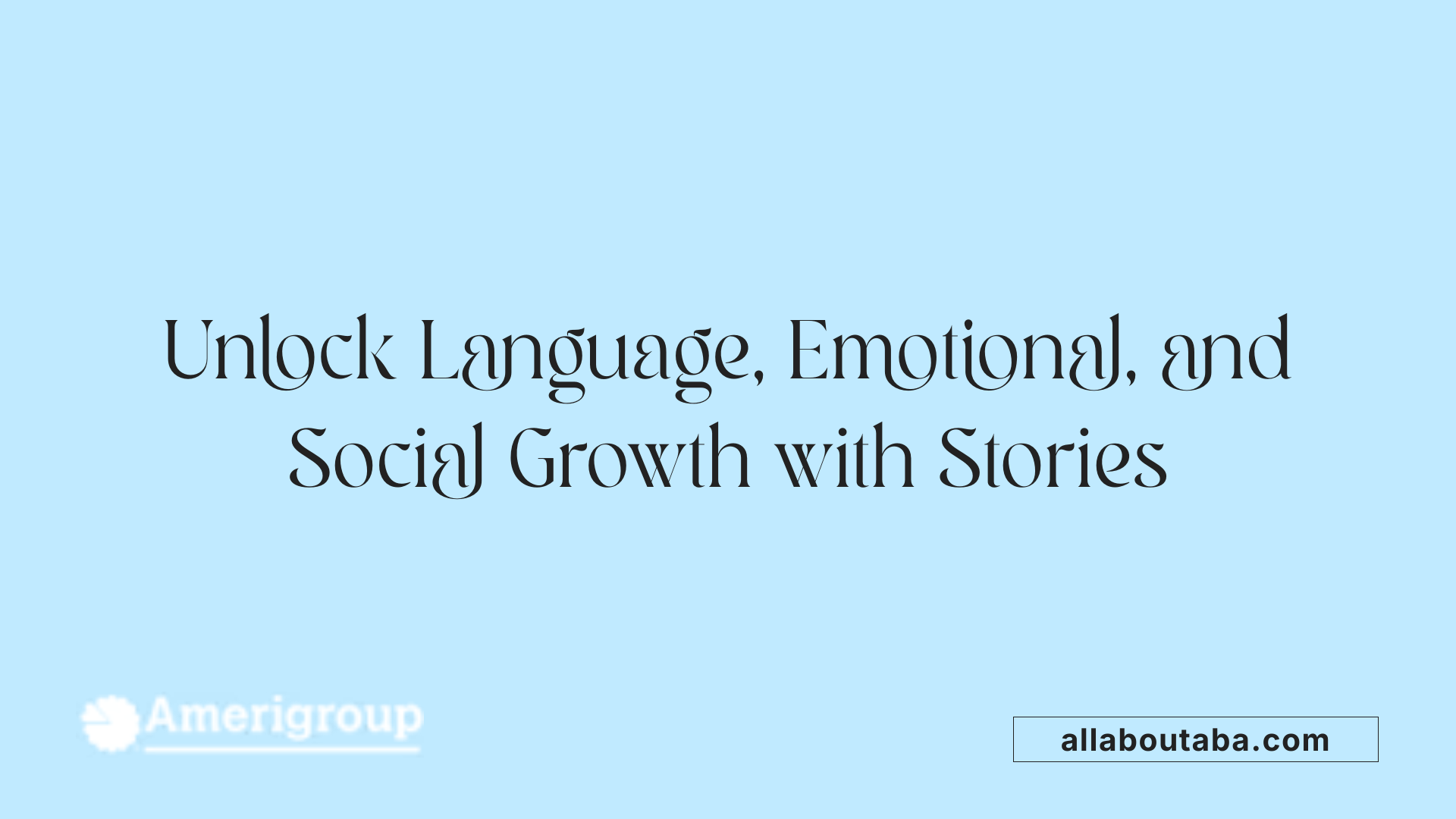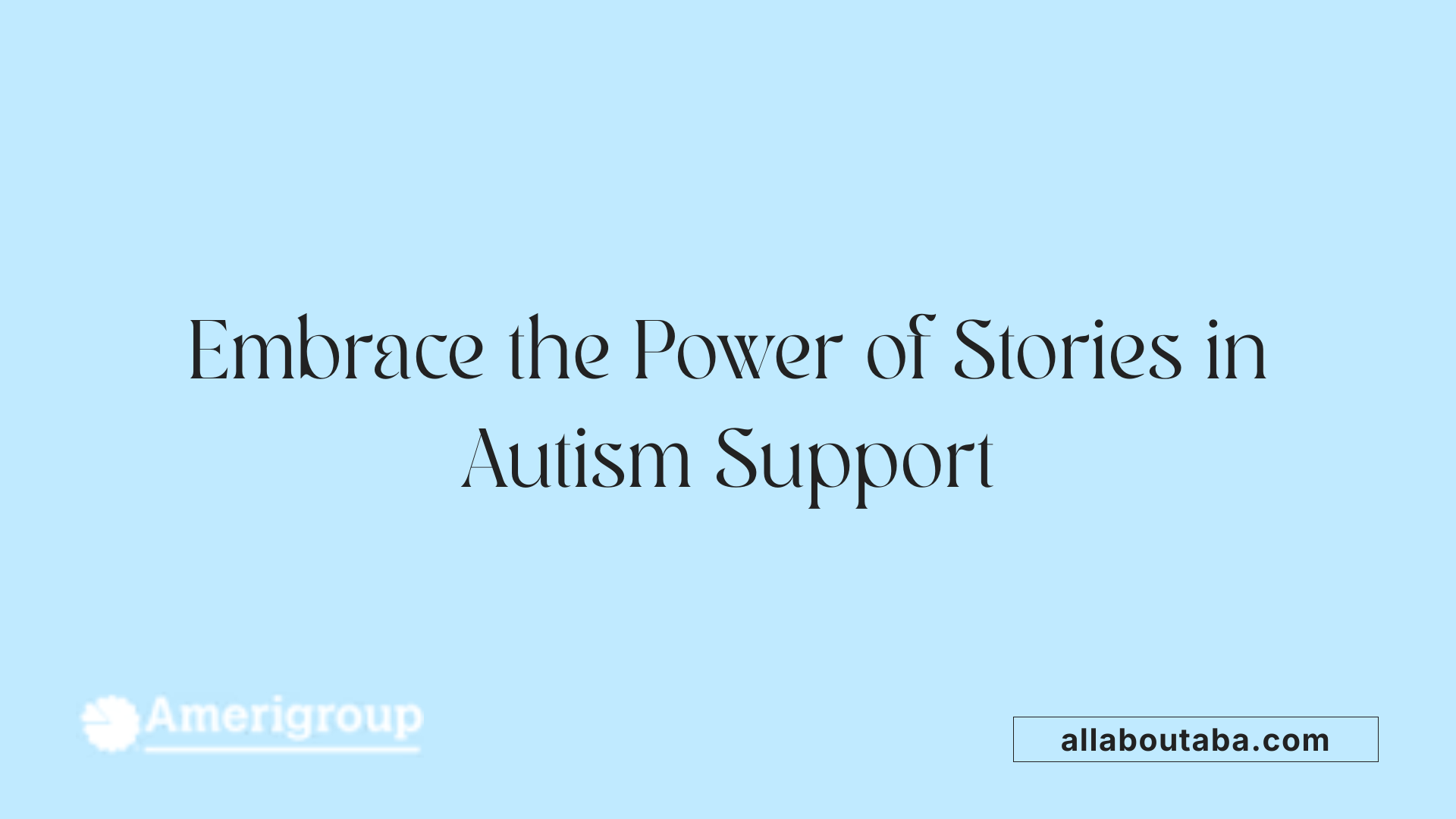Autism And The Benefits Of Story-Based Learning Activities
Understanding the Role of Story-Based Learning in Autism Interventions
Story-based learning activities have gained recognition as effective tools in supporting children with autism spectrum disorder (ASD). These activities, which include social stories and narrative interventions, serve to improve communication, social skills, emotional understanding, and behavioral regulation. This article explores how storytelling enhances developmental outcomes, examines the techniques used, reviews scientific evidence, and illustrates the benefits of incorporating stories into autism support strategies.
The Foundation and Development of Social Stories

Origins of social stories
Social stories, also known as social narratives, were developed in 1991 by Carol Gray, a teacher working with young autistic children. These stories were created as a way to help children understand complex social cues and expectations through explicit, simple stories. The approach involves describing social situations, typical actions, and behaviors, which helps children interpret and respond appropriately to social interactions.
Purpose of social narratives
The primary goal of social stories is to promote social participation and understanding for individuals with autism. They serve as instructive tools that clarify social concepts, reduce anxieties around unfamiliar situations, and teach appropriate responses. Research supports that social stories can help in decreasing aggressive behaviors, verbal protests, and in enhancing skills such as emotion recognition, executive functioning, following directions, and social responsiveness.
Customization for individual needs
For social stories to be most effective, they must be tailored to each child's unique needs, abilities, and contexts. Customization includes adjusting language complexity, choosing relevant themes, and incorporating personal interests. While most research demonstrates positive outcomes when stories are personalized, some children, especially those with limited comprehension or who are nonverbal, may benefit less. Proper implementation involves using stories as part of a broader behavioral strategy and ensuring they are age-appropriate.
| Aspect | Explanation | Additional Notes |
|---|---|---|
| Development | Created by Carol Gray in 1991 | Based on visual and verbal storytelling |
| Goals | Aid social comprehension, reduce problematic behaviors | Tailored to individual needs |
| Effectiveness | Supports behavior change, improves social and emotional skills | More research needed, especially through RCTs |
| Implementation | Customize stories for each child, incorporate visuals | Use alongside other interventions |
Overall, social stories are accessible, adaptable tools that help children with autism navigate social situations more confidently, supporting their participation and skill development in various settings.
Benefits of Story-Based Learning for Children with Autism
 Story-based learning activities, such as social stories and narrative exercises, offer numerous advantages for children with autism. These methods help them better understand social situations by providing clear, concrete descriptions of typical actions and expectations, which assist children in interpreting social cues and responding appropriately.
Story-based learning activities, such as social stories and narrative exercises, offer numerous advantages for children with autism. These methods help them better understand social situations by providing clear, concrete descriptions of typical actions and expectations, which assist children in interpreting social cues and responding appropriately.
Improving communication skills is another significant benefit. Stories, especially folktales, expose children to rich vocabulary and language patterns, fostering language development. Repetition within stories allows children to focus on nuanced aspects like facial expressions and body language, which enhances their understanding of human feelings and nonverbal communication.
Emotional regulation and reduction of anxiety are also supported through storytelling. Including hopeful themes and lessons about overcoming adversity, as seen in stories like 'Little Edwin’s Triumph,' teaches resilience and builds confidence. Additionally, explicit instructions embedded in stories, such as paying attention to tone of voice and facial expressions, help activate brain regions involved in understanding others’ intentions, which can lessen social anxiety.
Personalization plays a vital role in the effectiveness of story activities. Tailoring stories to each child's interests and developmental level boosts engagement and makes learning more meaningful. For example, incorporating props, costumes, or gestures during storytelling can make the experience more lively and accessible, encouraging participation.
Research indicates that these activities not only help children grasp social norms and emotions but also foster independence and self-regulation. They serve as adaptable tools that can be used across different settings, including home, school, and therapy sessions.
To summarize, story-based activities support a holistic developmental approach by enhancing language, social, and emotional skills. Their structured, visual, and engaging nature makes them particularly suitable for children with autism, helping them navigate social landscapes with greater confidence and understanding.
| Aspect | Benefits | Additional Details |
|---|---|---|
| Social understanding | Better interpretation of social cues | Stories clarify expected behaviors and typical actions |
| Communication skills | Greater vocabulary and expressive language | Repetition and storytelling reinforce learning |
| Emotional regulation | Reduced anxiety and resilience | Themes of overcoming challenges foster confidence |
| Engagement | Increased motivation and participation | Personalization with props and gestures enhances focus |
| Developmental outcomes | Cognitive, social, and emotional growth | Facilitates long-term skills and independence |
Using storytelling activities such as social narratives, folktales, and personalized stories can significantly improve the social and emotional lives of children with autism, equipping them with essential skills for everyday interactions.
Techniques and Strategies in Story-Based Learning

What techniques and methods are used in story-based learning to assist children with autism?
Story-based learning incorporates a variety of methods designed to improve social understanding and communication skills in children with autism. Visual supports are crucial, with social stories or narratives explaining typical social situations, expected behaviors, and cues. These visual aids often include images, symbols, or digital tools tailored to individual needs, making abstract concepts more concrete.
Role-playing and dramatization further deepen understanding by allowing children to act out scenes or embody characters. This practical approach helps children explore emotions, motivations, and social interactions in a controlled, engaging manner. Additionally, retelling stories using their own words or engaging with graphic organizers helps reinforce comprehension.
Modeling how to think aloud or respond during storytelling teaches children to observe and imitate appropriate social responses. Customized stories that focus on specific challenges or goals are also effective, fostering positive behavior and making learning relevant. These strategies work well in inclusive settings, providing children with autism a supportive environment to develop vital social and cognitive skills.
How do props, costumes, and participation techniques enhance storytelling?
Using props and costumes adds a sensory dimension to storytelling, making the experience more vivid and memorable. For children with autism, these tactile and visual elements help in forming connections with story characters and events. Costumes help children embody roles, fostering empathy and perspective-taking.
Participation techniques such as encouraging gestures, repeating key phrases, and asking questions about characters or plot promote active engagement. These methods not only sustain attention but also boost language skills and social interaction. For instance, asking a child to mimic facial expressions or respond with a phrase can deepen their understanding of emotions and social cues.
By involving children through physical participation and sensory engagement, storytelling becomes more than passive listening. It turns into an interactive learning experience that supports social development and helps children internalize important concepts more effectively.
Impact on Communication, Social Skills, and Understanding

What impact do story-based activities have on communication, social skills, and understanding in children with autism?
Story-based activities, including storytelling and social stories, play a vital role in enhancing communication, social skills, and overall understanding for children with autism. These activities provide a rich language environment that encourages vocabulary growth and improves listening skills.
Repetition within stories, especially folktales with clear themes, helps children focus on subtle cues like facial expressions and body language. This deepens their understanding of human feelings and social interactions. For example, a story with a lesson about resilience, such as 'Little Edwin’s Triumph,' can teach children that persistence leads to success despite difficulties.
Engagement strategies such as participation through gestures, phrases, and the use of props or costumes make stories more captivating. These methods encourage children to connect with the material, fostering active participation and making social learning more meaningful. As they become more involved, they develop skills for identifying emotions, recognizing social cues, and navigating social situations.
Although children with autism might face challenges in understanding complex narrative structures or producing detailed language, tailored storytelling interventions can still produce positive effects in these areas. The creative arts component complements storytelling by offering additional avenues for expression and understanding.
Research indicates that when these storytelling methods are customized to each child's needs and used appropriately, they promote significant advances in communication and social comprehension. Overall, story-based activities serve as powerful tools that support children on the autism spectrum in gaining vital social and communicative abilities, enhancing their participation in everyday social contexts.
Research and Evidence Supporting Story-Based Interventions
What research evidence supports the effectiveness of story-based interventions for autism?
Research indicates that story-based interventions like social stories have proven beneficial for children with autism. Systematic reviews and studies, including randomized controlled trials, have shown that social stories can lead to improvements in social skills, communication, and specific behaviors. These stories help reduce challenging behaviors, support understanding of social cues, and foster better social interactions.
Digital formats of social stories, such as apps or iPads, enhance engagement and have demonstrated sustained positive effects. Studies report that children, especially those who are verbal and younger, respond well to these interventions when delivered with fidelity. Successful implementation often involves proper training for educators and caregivers, making these tools feasible in natural settings like classrooms.
Overall, growing research supports the idea that story-based methods are effective in promoting social and behavioral progress in individuals with autism, providing a valuable supplement to traditional therapies.
What are the advantages and limitations of current research?
Most existing studies employ single-subject research designs. While these studies can show clear behavioral changes in individual cases, they limit our ability to generalize findings across broader populations.
The emergence of digital storytelling tools offers exciting possibilities for making interventions more engaging and accessible. These tools enable monitoring of progress and customization, but access to appropriate devices and training remains a challenge.
Despite these promising developments, more rigorous research, particularly randomized controlled trials, is essential. Such studies would strengthen evidence on the long-term benefits and help identify the optimal ways to incorporate story-based strategies into wider educational and therapeutic practices.
In conclusion, while current research demonstrates positive outcomes, further investigation is necessary to confirm effectiveness across diverse groups and settings, ensuring these interventions can be reliably scaled and adapted.
Conclusion: Embracing the Narrative Approach in Autism Support

What does the evidence suggest about the future potential of story-based activities for autism?
Research indicates that stories play a significant role in supporting children with autism by improving language, social skills, and emotional understanding. The development of social narratives and storytelling techniques has shown promising results in promoting desired behaviors and enhancing participation in social settings.
As methodologies improve and technology becomes more integrated into therapy and education, story-based activities are likely to become more accessible and personalized. Tools like digital storytelling, interactive media, and multimedia supports can make stories more engaging and tailored to individual needs.
Looking ahead, larger-scale studies, such as randomized controlled trials, are needed to confirm these benefits and establish best practices. Long-term research will help determine the sustainability of these interventions and their impact across different environments and age groups.
Furthermore, fostering inclusive storytelling practices that celebrate cultural diversity and represent a wide range of experiences can promote understanding, empathy, and acceptance. These approaches can help children with autism feel valued and understood, encouraging broader societal inclusion.
How can practitioners and families best utilize story-based activities?
Practitioners and families can enhance the effectiveness of storytelling by tailoring social stories to each child's specific needs, interests, and developmental stage. Customization involves selecting relevant scenarios, incorporating preferred topics, and adjusting complexity based on comprehension levels.
Effective storytelling techniques include using visual supports, such as pictures or cue cards, and involving children through gestures, phrases, and interactive participation. Incorporating props, costumes, and familiar settings can make stories more tangible and memorable.
Consistency in use across different settings—home, school, therapy—helps children generalize learned skills and behaviors. Collaboration with professionals ensures stories address particular social challenges or behavioral goals.
Digital tools, such as apps and interactive stories, can motivate children and provide varied formats for engagement. Practitioners and families should emphasize patience, repetition, and positive reinforcement, allowing children to build confidence and internalize social concepts at their own pace.
What does the future hold for storytelling and autism?
The future potential of story-based activities for autism is promising. Advances in neuroscience and educational technology will likely lead to more effective, engaging, and individualized storytelling interventions.
Increased emphasis on diversity and inclusion in storytelling will foster broader understanding and acceptance of autism within society. Incorporating stories featuring diverse characters and themes of overcoming adversity can promote resilience and empower children.
As research continues to expand, integrating storytelling with other interventions—like social skills training and sensory integration—can create comprehensive support frameworks. These multifaceted approaches can address complex needs more holistically.
Overall, storytelling remains a valuable tool. Its adaptability, cultural relevance, and ability to teach both concrete and abstract concepts ensure its ongoing importance in supporting children with autism.
| Aspect | Current Status | Future Directions | Additional Notes |
|---|---|---|---|
| Effectiveness | Promising but variable | More RCTs needed | Customization enhances outcomes |
| Accessibility | Widely used | Technology integration | Digital media will play larger role |
| Cultural Inclusion | Growing awareness | Diverse narratives | Promotes acceptance |
| Practitioner Use | Tailored strategies | Training and resources | Consistent application supports generalization |
| Research | Mostly single-case | Larger, controlled studies | Long-term impacts to be explored |
Advancing Autism Support Through Narratives
Story-based learning activities, especially social stories and narrative interventions, offer a versatile and evidence-based approach to supporting children with autism. These strategies foster essential skills such as communication, emotional understanding, social participation, and behavior regulation. Continued research and innovation promise to refine these methods, making them more effective and accessible. Emphasizing inclusive, personalized storytelling can promote greater understanding and acceptance in diverse settings, ultimately enhancing quality of life for individuals on the spectrum.
References
- “A scoping review: Social stories supporting behavior ...
- Important Ways Storytelling Can Benefit Kids with Autism
- 24 Classroom Activities for Kids with Autism
- Social stories and autism
- Tell Me About the Story: Comprehension Strategies for ...
- Free library of Social Stories for Autism
- A Social StoriesTm Intervention Package for Students with ...
- Writing and Using Social Narratives in All Environments
- Effects of social stories intervention for children and ...
Other articles
Recent articles

Autism And Eating Challenges Beyond Picky Eating

Best Practices For Autism-Friendly Public Transport Design

Best Ways To Foster Collaboration Between Parents And Schools For Autism Support

Supporting Autistic Children During Transitions Between Activities

The Role Of Teachers In Fostering Autism Peer Acceptance

Using Art Therapy To Support Children With Autism

Autism And Strategies For Addressing Sensory Defensiveness

Autism And The Benefits Of Structured Leisure Activities

How To Support Autistic Students During Exam Season

Autism And Goal Setting For Personal Growth

How To Use Gamification In Autism Learning Programs

How Schools Can Reduce Bullying Of Autistic Students

Early Intervention Strategies For Autism Spectrum Disorder

The Role Of Therapists In Autism Life Skills Coaching

How To Support Autistic Individuals In Crisis Situations

Autism And Self-Care Routines For Stress Management

Understanding Echolalia And Its Role In Autism Communication

Autism And Fine Arts Education Benefits

The Impact Of Multisensory Learning On Autism Education

How Family Counseling Supports Autism Household Dynamics

Best Practices For Inclusive Playgrounds For Autism

Best Practices For Autism-Friendly Shopping Centers

How Autism Affects Fine Motor Skill Development

Best Ways To Introduce Sensory Activities Into Daily Routines

How Sports Teams Can Be Inclusive Of Autistic Players

Autism And Strategies For Building Workplace Resilience

Autism And The Impact Of Hormonal Changes During Puberty

How To Support Autistic Students In Foreign Language Classes

Best Ways To Teach Money Skills To Teens With Autism

Supporting Siblings Of Children With Autism

Autism And Co-Occurring Gastrointestinal Disorders

The Role Of Art Projects In Autism Sensory Integration

How Schools Can Incorporate Sensory Break Spaces

Best Practices For Autism Sensory Regulation At School

Autism And Strategies For Teaching Organizational Skills

Understanding The Relationship Between Autism And Anxiety Disorders

Autism And Life Planning For Long-Term Care

Exploring Visual Supports In Autism Education

Ways To Encourage Social Interaction In Children With Autism

The Connection Between Autism And Dyscalculia

The Role Of Occupational Therapy In Transition Planning For Autism

The Role Of Physical Therapists In Autism Motor Skills Support

How To Teach Decision-Making Skills To Autistic Young Adults

The Connection Between Autism And Epilepsy

Best Practices For Transitioning Autistic Children Into New Schools

Autism And Time Management Challenges In Adulthood

The Role Of Visual Arts In Autism Communication Development

How To Address Tactile Defensiveness In Autism

Best Practices For Telehealth Autism Therapy

How To Help Autistic Children Develop Friendship Skills

How Schools Can Support Autistic Students In Career Prep

Best Strategies For Autism-Friendly Event Planning

Understanding Noncontingent Reinforcement In Autism Behavior Plans

How Drama Therapy Benefits Autistic Individuals

Best Practices For Autism-Friendly Fitness And Recreation Centers

Best Ways To Promote Healthy Social Media Use For Autistic Teens

How To Help Autistic Children Cope With Public Speaking

Autism And Strategies For Managing Unexpected Changes

Best Podcasts About Autism For Parents And Educators

Autism And The Impact Of Seasonal Changes On Behavior

The Role Of Diet In Managing Co-Occurring Conditions With Autism

Sleep Challenges In Autism And Practical Solutions

Best Ways To Build Daily Routines For Autistic Children

Best Practices For Supporting Autistic Entrepreneurs

Autism And Strategies For Navigating Large Social Gatherings

Adaptive Sports And Recreational Activities For People With Autism

Autism And The Benefits Of Story-Based Learning Activities

Understanding The Role Of Play In Autism Development

Autism And The Impact Of Environmental Noise On Learning

How To Create Autism-Friendly Community Spaces

Autism And Chronic Health Conditions: What To Know

The Role Of Care Managers In Autism Life Planning

How To Teach Social Boundaries To Autistic Children

How Autistic Individuals Experience Empathy Differently

How To Support Autistic Employees In Remote Work Settings

Autism And The Relationship Between Motor Skills And Learning

How To Create Community Resource Guides For Autism Families

How To Teach Daily Living Skills To Autistic Teens

Autism And The Impact Of Mind-Body Practices On Stress Reduction

Autism And The Benefits Of Outdoor Group Activities

How To Create Autism-Friendly Sensory Paths In Schools

Best Practices For Autism-Friendly Park And Recreation Areas

Autism And Strategies For Reducing School Refusal

Supporting Autistic Individuals In Public Speaking

The Role Of Diet In Managing Autism Symptoms

The Benefits Of Gardening Clubs For Autism Social Development

How To Prepare Autistic Children For Dental Visits

Autism And Employment: Career Paths That Work

Best Practices For Autism-Friendly Hotels And Lodging

The Impact Of Screen Time On Autism Development

Autism Screening Tools For Early Childhood

The Role Of Physical Exercise In Autism Therapy

Best Strategies For Supporting Autistic College Students

The Role Of Technology In Autism Early Detection

Sensory-Friendly Classroom Design Ideas For Autistic Students

The Role Of Speech Therapy In Building Social Communication Skills

Best Strategies For Handling Autistic Burnout In Adults

Autism And The Importance Of Predictability In Routine

Autism And Peer Education: Teaching Acceptance In Schools

Best Practices For Sensory-Friendly Libraries And Reading Rooms
We’re All About You, Your Family, and Your Child

